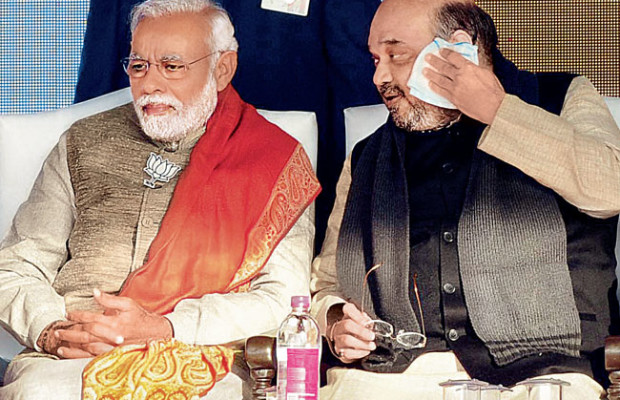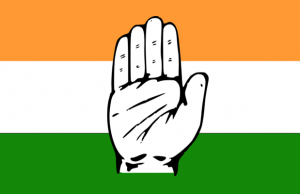ROUGH ROAD FOR BJP

With Assembly elections on the horizon in Assam, West Bengal, Kerala, Tamil Nadu, and Puducherry, the Bharatiya Janata Party president Amit Shah is on the road once again to fulfill his party’s dream of a “Congress-free India”. The BJP recently re-elected the 51-year-old Shah as its president, despite major electoral defeats in two states. After having a free hand in reshuffling the organisation of the “world’s largest political party”, Shah has every right to believe that he is on the path to political success.
But it won’t be easy for Amit Shah. Nor will it be a cakewalk for the Congress in the five poll-bound States. But it is as much a fact that the BJP’s chances of success are poorer. Assam is critical for the BJP while West Bengal is a test of its new ambition. In Kerala and Tamil Nadu, the BJP can at best hope for a few bonus points. In other words, the BJP president will practically have nothing much in his kitty this year.
Punjab, Uttar Pradesh, and Uttarakhand will go to the polls in 2017 with Manipur and Goa. Barring Uttar Pradesh, the elections in the other four States could be advanced ahead of schedule to the end of this year. The nation has witnessed the Modi-Shah duo’s desire to install a BJP government by hook and crook in Uttarakhand. But it has created a ground wave of sympathy for the Congress in the hills. In Punjab, the BJP has a very marginal role while its ally Akali Dal is suffering from serious anti-incumbency. In UP, even Amit Shah knows that repeating the 2014 Lok Sabha election tally will be difficult.
Those who know Shah well say he is best at reassessing strategy, tactics and style and, therefore, is capable of playing political wonders. But after the blunders in Delhi and Bihar, several leaders within the party have raised doubts about his electoral prowess. It is a different thing that Shah managed to retain the confidence of Modi after the Bihar debacle. That is down to the internal dynamics between Narendra Modi, Arun Jaitley, and Amit Shah. If you have to ignore the outcome of the Delhi elections because of Jaitley’s maneuvers in installing Kiran Bedi, you will also have to ignore the failure of Shah’s strategy in Bihar.
Shah’s current tenure as BJP president is not going to be smooth because he will have to manage conflicts between the liberals and hardliners within his party and in the extended family. It will also be difficult for Shah to manage a more restive Rashtriya Swayamsevak Sangh. He will also have to solve the knotty questions thrown at him by seniors sitting in the Margdarshak Mandal. At a time when the BJP’s fortunes are on the slide after reaching a peak in May 2014, the master strategist Shah has to pass really difficult tests in years to come.
When Prime Minister Modi repeatedly talked of a “Congress-free India” during the general elections, he actually wanted the BJP to emerge as the default party for governance. Shah can now also repeat the same chant during every state election. But to make it happen, the BJP needs a base in Eastern and Southern India. There are no indications that the BJP will gain such ground during the upcoming Assembly polls in five States.
The changing political realities in the Hindi heartland also tells a different story. Even in Gujarat, where it completely blanked out the Congress, the party is stuttering as shown by the results of the recent elections to local bodies. The political realities in Madhya Pradesh, Chhattisgarh and Rajasthan are also changing fast where elections will be held in 2018.
If BJP does not win Assam and shows no reasonable gains in West Bengal, Tamil Nadu and Kerala, it would be seen as a referendum on the Modi government. Shah is then bound to face difficulties in keeping the morale of his party high. Unless he stops micro-managing every election and starts empowering regional leaders, he will face no respite from the bad weather. A top heavy high command culture has always proved suicidal for any mass-based party. The BJP is no exception.
There is a silent but strong group in the BJP which has shown that it is not inclined to join Shah’s orchestra. Murmuring by individuals with fundamental disagreements with the Modi-Shah style of functioning is not something new. Cracking down on them will never be easy. Modi’s invincibility is fading away. Shah is not somebody who can deliver own his own.
Modi also has to pass the test of revamping his Cabinet after the Budget session. Modi feels that he is surrounded by a large number of underperformers. It will not be easy for Modi to replace the Ministers who have already been identified as poor performers. Back when he won a huge mandate in may 2014, Modi could form a Cabinet of his choice. Now these pressure groups are not so irrelevant. They are not going to sit quiet this time. Any reshuffle is bound to create some ruffles.
Sustainable development is the pathway to a bright future which offers a framework to generate economic growth and achieve social justice. This is one area where the Modi government hasn’t done much after taking over. If you have only leadership without any good governance, you can perhaps complete your tenure in office, but can’t reclaim your seat. We’ve seen over time that countries that have the best economic growth are those that have good governance, and good governance comes from freedom of communication. Modi, Shah, their party and parent organisation should realise this as soon as possible.




You must be logged in to post a comment Login